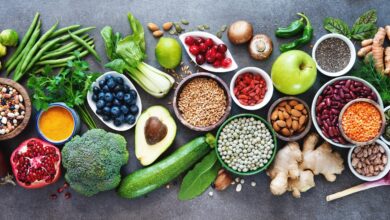What is Muscular Hypertrophy and How To Achieve It?
Muscular hypertrophy is the scientific term for muscle growth. It’s a biological adaptation to physical stress.

Muscular Hypertrophy
Hypertrophy is over-nourishment or excess growth in the size of individual muscle fibers.
There are two main types of hypertrophy:
Sarcoplasmic Hypertrophy
It is an increase in the sarcoplasm. Sarcoplasm is the fluid and non-contractile elements (like glycogen and water) surrounding the muscle fibers.
This type gives muscles a better look but doesn’t lead to a major increase in strength. Bodybuilders often focus on this type.
Myofibrillar Hypertrophy
It involves an increase in the size and number of myofibrils which are the actual contractile parts of the muscle fiber. This type directly increases the muscle’s force production (strength). Powerlifters and strength athletes primarily benefit from this type.
Muscle Growth Mechanisms
Three primary factors drive muscle hypertrophy:
Mechanical Tension
This is the most important factor. Mechanical tension is the force placed on the muscle fibers when you lift a weight. To maximize muscle growth, you must lift weights heavy enough to challenge your muscles, especially in the eccentric (lowering) phase of an exercise.
When a heavy weight stretches the muscle under tension, it activates specific pathways (like the mTOR pathway) that signal the muscle to grow larger and stronger. High tension forces the muscle to adapt.
Muscle Damage
Lifting weights causes micro-tears in the muscle fibers. This damage is what creates the feeling of soreness you get a day or two after a tough workout (Delayed Onset Muscle Soreness or DOMS).
This damage is a signal for the body to start the repair process. The immune system rushes in to clean up the damaged tissue, and then satellite cells (dormant muscle stem cells) activate. They multiply and donate their nuclei to the damaged muscle fiber, which provides the extra machinery needed to build more protein and make the fiber bigger.
Metabolic Stress
This is the “burn” you feel when you do high-repetition sets. Metabolic stress results from the buildup of byproducts like lactate, hydrogen ions, and other metabolites when you work muscles hard with limited rest.
This stress causes cells to swell, a phenomenon called cellular swelling or the “pump.” While the pump is temporary, this stress increases hormone release and improves muscle hydration, which together promote an anabolic (building) environment for muscle growth.
Training
To effectively trigger hypertrophy, your training must meet certain requirements:
Volume, Intensity, and Frequency
Volume is the total amount of work you do (sets, reps, weight). High volume is key for maximizing sarcoplasmic hypertrophy. Most research suggest that performing 10 to 20 hard sets per muscle group per week is optimal.
Intensity refers to the weight you lift relative to your maximum. Lifting weights in the 6-12 repetition range is often called the “hypertrophy range .It balances mechanical tension (heavier weight) and metabolic stress (sufficient reps).
Frequency is often you train a muscle group. Training a muscle group 2-3 times per week is generally better than just once, as it allows you to hit the muscle with the growth signal more frequently.
Time Under Tension (TUT)
Focusing on the speed of your lifts matters. Slowly lowering the weight (the eccentric phase) increases time under tension and causes more mechanical tension and muscle damage, which are powerful growth drivers. Don’t rush your reps; control the weight.
Progressive Overload
Muscle growth stops when your body adapts to your current routine. The fundamental rule for long-term growth is progressive overload. You must continuously increase the demands placed on your muscles. This can mean:
- Lifting more weight.
- Doing more repetitions with the same weight.
- Doing more sets.
- Reducing rest time between sets.
Nutrition and Sleep Time
Protein Intake
A general guideline for individuals training for hypertrophy is to consume approximately 0.7 to 1.0 gram of protein per pound of body weight per day (or 1.6 to 2.2 grams per kilogram).
Distributing this protein evenly across 3-5 meals throughout the day maximizes its use for muscle repair and growth.
Calories
Muscle building is an energy-intensive process. You need a slight caloric surplus (eating more calories than you burn) to support optimal hypertrophy.
Your body can only build new tissue efficiently when it has an excess of energy. This is often referred to as a “bulking” phase. Complex carbohydrates and healthy fats provide the necessary energy.
Sleep
Sleep is arguably the most crucial recovery tool. During deep sleep, your body releases its highest amounts of Growth Hormone and Testosterone.
Aim for 7-9 hours of quality sleep per night.

